Whole30 Diet: 7 Benefits, Risks, And How It Works
A 30-day journey to reset your eating habits and revitalize your health.
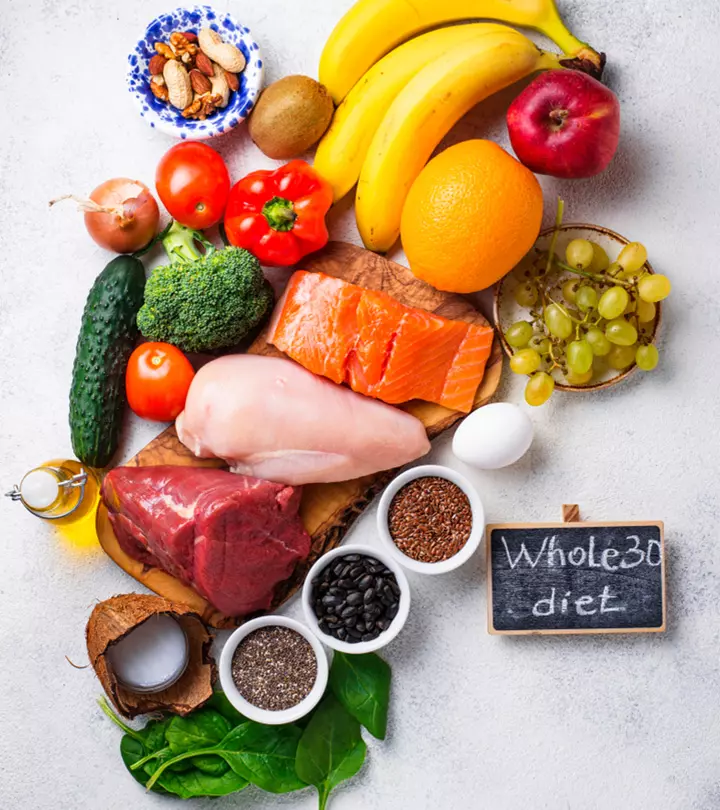
Image: Shutterstock
The Whole30 diet is a month-long, clean-eating program that focuses on the intake of whole, unprocessed foods. The dietary program prioritizes health benefits by eliminating potentially problematic foods. It aims to fix unhealthy eating habits, improve digestion, boost energy levels, and foster a deeper understanding of how food impacts our body. In this article, we discuss everything about how this diet works, its benefits, and potential side effects. Continue reading.
 At A Glance: Whole30 Diet
At A Glance: Whole30 Diet- Principle: Eating whole, unprocessed foods and eliminating problematic foods from your diet for 30 days.
- Purpose: To identify food sensitivities and reset food habits in order to improve digestion and boost energy levels.
- Who It Is For: Individuals who want to improve their eating habits and reduce sugar cravings as well as digestive issues.
- Duration: Short-term.
- Who Should Avoid: People with a history of eating disorders, individuals on medications, and pregnant or breastfeeding women.
- Cons: May cause nutrient deficiencies and constipation.
In This Article
What Is The Whole30 Diet?
The Whole30 diet is a 30-day restrictive dietary program designed to identify and restrict the consumption of foods that may cause inflammatory and gastrointestinal discomfort, skin problems, cravings, and energy fluctuations. Two sports nutritionists, Melissa Hartwig Urban and Dallas Hartwig, created this diet in 2009. It is a highly restrictive diet plan that excludes commonly problematic foods such as gluten-containing grains, processed sugar, and soy for 30 days to allow your body to recover from their negative effects and repair itself. Participants are encouraged to reintroduce the excluded foods after 30 days, one at a time, to understand how they affect their health and well-being.
 Did You Know?
Did You Know?The simple strategy of the Whole30 diet has made it popular among millions. Let us explore how this diet works in the next section.
Key Takeaways
- The Whoe30 diet is a 30-day diet plan that emphasizes the intake of whole, unprocessed foods while eliminating some food types.
- Eliminating certain food groups for a period helps identify potential food sensitivities or intolerances.
- This diet reduces cravings for sugary foods, improves energy, and resets eating habits.
- However, people on medications or with eating disorders should avoid this diet.
How Does The Whole30 Diet Work?
The Whole30 diet is not a long-term plan. It is a quick reset strategy that can help you find potential food sensitivities and create a better relationship with food. Here is how it works:
- During the 30-day elimination period, you need to stop consuming dairy products, foods with added sugars or a high amount of preservatives, and other common foods that may cause allergies.
- You will instead take more whole foods like fresh fruits, vegetables, and healthy fats, and moderate amounts of lean protein.
- You must strictly adhere to the program’s rules to enjoy the benefits. This is one reason the diet does not allow any ‘cheat days’. This is one of its key principles.
- After 30 days, you can gradually reintroduce the problem foods one at a time. Consume them for a few days and stop their intake to observe your body’s response. This can help you identify specific triggers that cause discomfort.
Note
: Always consume Whole30-approved foods and read product labels of packages to ensure they contain no prohibited ingredients.
 Did You Know?
Did You Know?The Whole30 diet is restrictive and follows a strict protocol. But if you can stick with it, you get to experience several benefits. We discuss the same in the following section.
Whole30 Diet Benefits
- May Promote Body Fat Reduction: The fruits and vegetables and mono- and polyunsaturated fats in the diet may help promote body fat reduction. Trained CrossFit individuals could lose body fat and gain fat-free mass with the Whole30 diet (1). Also, the dietary fiber in fruits and vegetables may help with fat loss and weight loss (2).
- May Provide Better Sleep: This diet plan allows all nuts and nut butters. These contain antioxidants like serotonin, melatonin, and polyphenols that may help improve sleep quality (3).
- May Improve Digestion: The fruits and vegetables (leafy greens) in the diet are high in dietary fiber that may help improve digestive health (4).
- May Reduce Cravings: The fruits and healthy fats in the diet may help reduce cravings as they both may promote feelings of fullness (5).
- May Increase Energy: The intake of tree nuts, which are rich in vitamins, flavonoids, and mono- and polyunsaturated fats, may help boost energy (6). However, consume nuts in moderation as their excess intake may cause weight gain.
- May Reduce Inflammation: The consumption of anti-inflammatory foods like fruits and vegetables, vitamin C, and mono- and polyunsaturated fats may help reduce inflammation (7).
- May Regulate Blood Sugar Levels:Regular intake of leafy greens can improve glycemic control and may help regulate blood sugar levels (8).
This dietary pattern claims to provide many health benefits beyond weight loss. However, individual experiences may vary, and direct research on the benefits of the Whole30 diet is limited. Hence, consult your healthcare professional before making any changes to your diet.
If you are looking for a diet focussed on weight loss, you may try the 30 Day Shred Diet which is sometimes mistaken with the Whole30 but differs significantly from it. It offers a more structured fitness and nutrition approach and may help support your weight loss goals.
While the Whole30 diet appears quite beneficial, it does eliminate certain nutrient-rich food groups. This restriction may pose risks for some people. Learn further in the next section.
Risks Associated With The Whole30 Diet

The Whole30 diet is very restrictive, and one needs a lot of self-discipline to follow it. While there are no major health risks associated with it, restricting nutrient-rich food groups like dairy or grains, for 30 days, may lead to nutrient deficiencies in some people. Individuals largely dependent on dairy and grains may struggle switching to this diet, and may even experience deficiencies of calcium.
In addition, check with your healthcare professional before starting this diet, especially if you have a history of eating disorders, are already on dietary restrictions, or are taking any medication. You may start this diet once you get a clearance.
Further, avoid this diet if you are pregnant or breastfeeding as it eliminates multiple food groups. A specially designed pregnancy diet is better suited to ensure more balance and flexibility to ensure essential nutrients for both mother and baby.
Planning your meals according to the guidelines of this diet can help you achieve your health and fitness goals. The following 7-day sample diet menu can shed light on what to expect.
Day 1
- Breakfast: 1 slice of Frittata with onion, bacon, and peppers
- Lunch: 2 lettuce wraps filled with chicken salad
- Dinner: 1 cup of beef stir-fry with mixed vegetables
Day 2
- Breakfast: 1 fried egg sandwich
- Lunch: 1 bowl (500 ml) meatball soup with greens
- Dinner: 85 grams or 3-4 oz baked fish with a side salad (100–200 grams)
Day 3
- Breakfast: Cauliflower grits bowl
- Lunch: 1 cup of pasta salad
- Dinner: Air fried buffalo wings (6-8)
Day 4
- Breakfast: 2–3 slices of smoked salmon with cucumber slices
- Lunch: 1 bowl (500 ml) of turkey and vegetable soup
- Dinner:85 grams of baked cod with a side roasted beet (120 to 240 grams)
Day 5
- Breakfast:85 grams of sausage stir-fry with a fried egg
- Lunch: 1 bowl of strawberry poppy seed chicken salad
- Dinner: Garlic steak bites (6-8), 1 cup of cooked vegetables
Day 6
- Breakfast: One omelet with onions, bell peppers, and mushrooms
- Lunch:1 bowl of zucchini noodles with grilled chicken and pesto sauce
- Dinner: 1 pork chop with roasted Brussels sprouts (1 cup)
Day 7
- Breakfast: 2-3 scrambled eggs with spinach and tomatoes
- Lunch: 1 bowl of tuna salad with mixed greens
- Dinner: 1 stuffed bell pepper with ground meat and veggies
While the Whole30 diet eliminates certain food groups for 30 days, it also opens up other food groups that you can try. Scroll down to take a look at the list of foods you can consume on this diet.
Whole30 Diet: Foods List
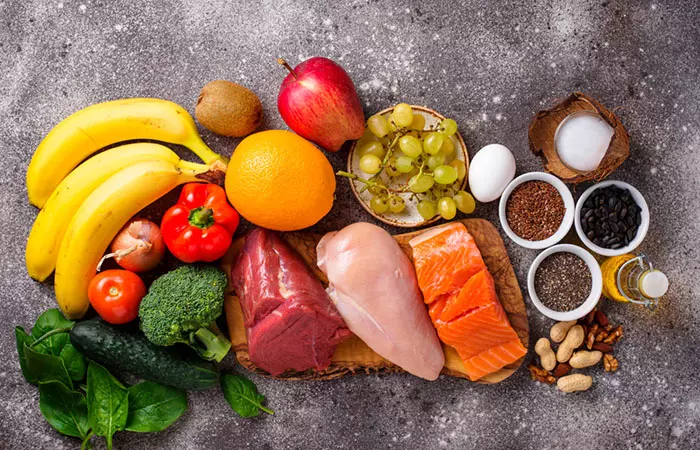
The Whole30 diet only allows whole and minimally processed foods. These include:
- Fruits (berries, apples, melon)
- Seafood (fish, shrimp, crab, scallops, lobster)
- Poultry And Meat (chicken, lamb, pork, turkey, veal, beef)
- Vegetables(all)
- Green Leafy Veggies(broccoli, spinach, kale)
- Nuts And Seeds (all nuts and nut butters, except peanuts)
- Fats(ghee, olive oil, coconut oil, avocado oil)
We will now check out what food types are not allowed on this diet.
What Foods Are Not Allowed On The Whole30 Diet?
- Sugar (artificial sweeteners, honey, raw sugar): Foods with added sugars are full of empty calories. Their excessive intake can cause headaches, cognitive issues, and an increased risk of diabetes and obesity (9), (10). However, more research is warranted in this regard.
- Grains (rice, oats, wheat): Daily intake of cereal grains and wheat products may lead to chronic inflammation in some due to the presence of anti-nutrientsi Natural or synthetic compounds found in plants and various foods that interfere with nutrient absorption in the body. (11).
- Dairy (milk, cheese, yogurt): Some individuals cannot digest the proteins in milk and end up experiencing gas and bloating (12). In addition, the steroid hormonesi A class of hormones that plays a key role in various functions within the human body. in milk may lead to tumors in certain people (13).
- Legumes (lentils, soy, beans, peas): Antinutrients such as tannins, lectins, and phytates in legumes are hard to digest and inhibit the absorption of nutrients (14).
- Alcohol (wine and beer):Higher alcohol consumption in the fasting state mainly interferes with glucose metabolismi A series of chemical reactions which occur within cells and are responsible for converting glucose into energy. and can cause dangerously low blood sugar levels (15).
- Processed Additives(MSG and carrageenan): Monosodium glutamate (MSG) is a flavor enhancer that may cause abdominal pain, headache, and excess sweating (16). Carrageenan is a seaweed extract that may lead to digestive issues (17).
While these restrictions are not too many, it may mean that you need to avoid certain foods that you otherwise may consume regularly. So does that mean following this diet can be a challenge? Well, not really – because we have listed below some delicious recipes that fit very well with the Whole30 diet.
Whole30 Diet Recipes
1. Garlic shrimp
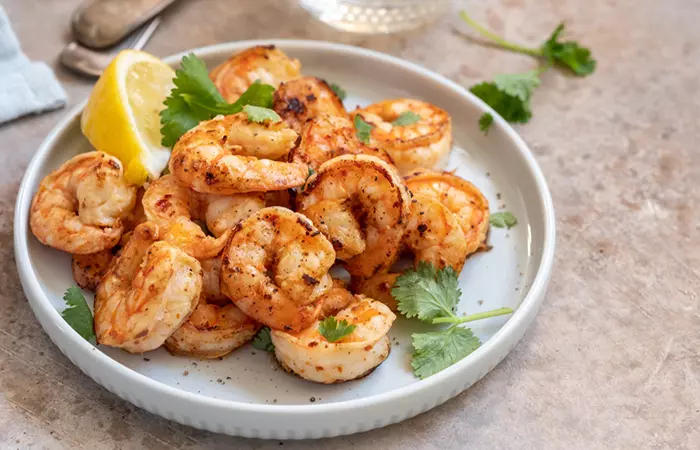
Ingredients
- 2 tablespoons of cold butter
- 3 tablespoons of lemon juice
- 1 1/2 tablespoons of olive oil
- 1 pound of shrimp
- 6 cloves of garlic
- ¼ teaspoon of red pepper flakes
- 1 tablespoon of caper brine
- Water, as needed
- 1/3 cup of chopped flat-leaf parsley
How To Prepare
- Heat olive oil in a heavy skillet over high heat until it just begins to smoke.
- Place the shrimp in the skillet and cook for 1 minute without stirring.
- Season the shrimp with salt and cook until pink for about a minute.
- Add garlic and red pepper flakes and stir for one more minute.
- Stir in the lemon juice, caper brine, butter, and half the parsley. Cook for a minute, until the butter melts and everything mixes well.
- Reduce heat and stir in the remaining butter. Cook for 2 to 3 minutes, until the sauce thickens and the shrimp turns opaque.
- Remove the shrimp and continue to cook the butter sauce, adding water 1 teaspoon at a time, for 2 minutes.
- Season with salt to taste. Top it with the pan sauce and remaining parsley while serving.
2. Chicken Salad Lettuce Wraps
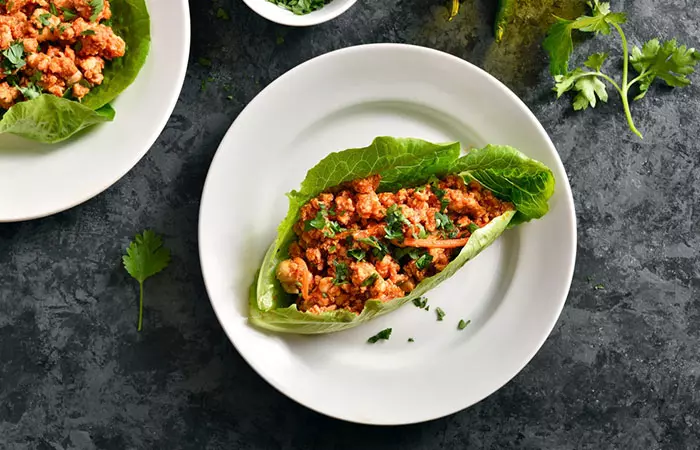
Ingredients
- ½ cup of mayonnaise
- 2 cups of cooked chicken (shredded)
- ½ teaspoon of salt
- ¼ cup of sliced almonds
- ¼ teaspoon of pepper
- ½ cup of halved grapes
- 3 celery stalks (diced)
- Romaine lettuce leaves
How To Prepare
- Add the chicken to a large bowl.
- Combine the chicken with diced grapes, celery, and almonds.
- Add the mayonnaise and thoroughly blend until it is fully combined.
- Sprinkle in the salt and pepper.
- Fill romaine leaves with the chicken salad to create delicious lettuce wraps.
3. Roasted Brussels Sprouts
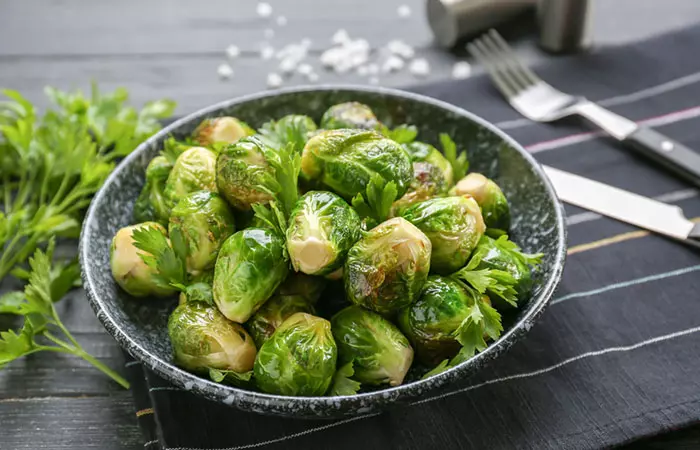
Ingredients
- 3 tablespoons of olive oil
- 1 1/2 pounds of Brussels sprouts
- ¾ teaspoon of Kosher salt
- ½ teaspoon of freshly ground black pepper
How To Prepare
- Preheat the oven to 400 degrees F.
- Cut off the brown ends and remove the yellow leaves from the Brussels sprouts.
- Toss the sprouts with olive oil, salt, and pepper in a bowl.
- Spread them on a sheet pan and roast for 35 to 40 minutes until they are crispy on the outside and tender on the inside.
- Shake the pan from time to time to brown the sprouts evenly.
- Sprinkle with more kosher salt and serve hot.
The Whole30 diet is often compared with the Paleo diet as both options seem to include similar foods. However, the two are distinctly different. Learn more in the next section.
Whole30 Diet Vs. Paleo Diet
The Whole30 diet is a restrictive, short-term dietary plan designed for a 30-day reset. But the Paleo diet is a long-term choice that may allow some flexibility. While the Whole30 diet is designed to reset our relationship with food, Paleo is based on the idea that modern humans should include foods in their diet that were available to their prehistoric ancestors. Whole30 is a stricter program than the Paleo diet in terms of the foods it eliminates. For instance, while alcohol is strictly prohibited during the 30-day diet plan, Paleo allows for moderate consumption.
The Whole30 diet is a 30-day restrictive dietary approach designed to eliminate potentially harmful food groups that cause health concerns in some people. This dietary program helps one identify foods that trigger digestive issues, inflammation, and skin problems and reset your body. However, it requires a high degree of meal planning and is not suitable for people dealing with eating disorders or following any specific dietary patterns. Hence, it is important to consult your healthcare professional before starting this diet.
Infographic: Whole30 Diet: What To Eat And What To Avoid
The Whole30 diet concentrates on eating whole, unprocessed foods while restricting the consumption of those that trigger sensitivities. The 30-day dietary program is for those who want to identify foods that cause health problems and improve their digestive and skin health while they are at it. In the infographic below, we have listed the foods to include as well as avoid in this diet. Take a look!
Some thing wrong with infographic shortcode. please verify shortcode syntax
Frequently Asked Questions
Are bananas Whole30 approved?
Yes. All fresh fruits, including bananas, are Whole30 diet-approved. However, consume them in moderation if you have trouble with sugar cravings.
Is Whole30 good for arthritis?
There is no scientific evidence to suggest that the Whole30 diet is good for arthritis. However, anecdotal evidence suggests that some people with the condition have found these dietary changes to have a positive impact on their symptoms.
Is Whole30 anti-inflammatory?
This diet is not specifically labeled as being anti-inflammatory. It merely focuses on eliminating some food groups for 30 days, such as grains, and may have some anti-inflammatory effects as a consequence.
Can you eat potatoes on a Whole30 diet?
Yes. You can eat potatoes as part of the Whole30 diet. However, avoid eating packaged or deep-fried potato chips.
Can you have corn on the Whole30 diet?
No. Corn is not allowed on the Whole30 diet. This diet plan excludes all grains, which can be problematic for some individuals.
Illustration: Whole30 Diet: What Foods To Eat, Benefits, And Meal Plan
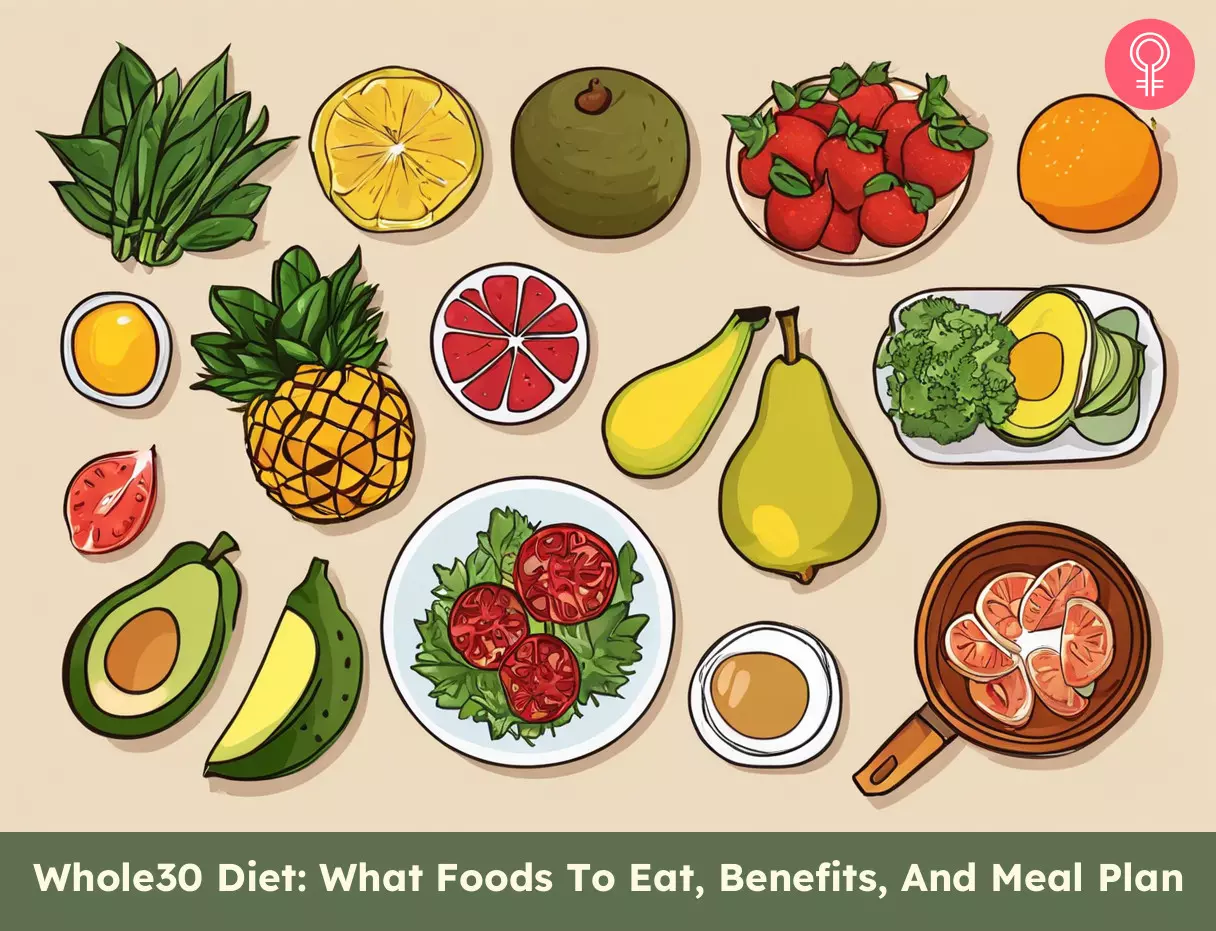
Image: Stable Diffusion/StyleCraze Design Team
The following video shows how to unlock the secrets to a healthier you with the Whole30 diet. Get ready for a delicious and nutritious journey!
References
Articles on StyleCraze are backed by verified information from peer-reviewed and academic research papers, reputed organizations, research institutions, and medical associations to ensure accuracy and relevance. Read our editorial policy to learn more.
- Effects of whole 30 dietary program on body composition and crossfit performance
https://journals.lww.com/acsm-msse/fulltext/2017/05001/effects_of_whole_30_dietary_program_on_body.672.aspx - Increased dietary fiber is associated with weight loss among Full Plate Living program participants
https://www.ncbi.nlm.nih.gov/pmc/articles/PMC10150096/ - Strategies of functional foods promote sleep in human being
https://www.ncbi.nlm.nih.gov/pmc/articles/PMC4440346/ - High fiber diet
https://www.ncbi.nlm.nih.gov/books/NBK559033/ - Health Benefits of Fruits and Vegetables
https://www.ncbi.nlm.nih.gov/pmc/articles/PMC3649719/ - A critical review on the role of food and nutrition in the energy balance
https://www.ncbi.nlm.nih.gov/pmc/articles/PMC7231187/ - The association of anti-inflammatory diet ingredients and lifestyle exercise with inflammaging
https://www.ncbi.nlm.nih.gov/pmc/articles/PMC8621229/ - Increased vegetable intake improves glycaemic control in adults with type 2 diabetes mellitus: a clustered randomized clinical trial among Indonesian white-collar workers
https://www.ncbi.nlm.nih.gov/pmc/articles/PMC9241062/ - Health outcomes of non-nutritive sweeteners: analysis of the research landscape
https://nutritionj.biomedcentral.com/articles/10.1186/s12937-017-0278-x - The association between artificial sweeteners and obesity
https://pubmed.ncbi.nlm.nih.gov/29159583/ - The dietary intake of wheat and other cereal grains and their role in inflammation
https://www.ncbi.nlm.nih.gov/pmc/articles/PMC3705319/ - Effects of milk containing only A2 beta casein versus milk containing both A1 and A2 beta casein proteins on gastrointestinal physiology, symptoms of discomfort, and cognitive behavior of people with self-reported intolerance to traditional cows’ milk
https://www.ncbi.nlm.nih.gov/pmc/articles/PMC4818854/ - Hormones in dairy foods and their impact on public health – a narrative review article
https://www.ncbi.nlm.nih.gov/pmc/articles/PMC4524299/ - Legume seed protein digestibility as influenced by traditional and emerging physical processing technologies
https://www.ncbi.nlm.nih.gov/pmc/articles/PMC9368013/ - Consequences of alcohol use in diabetics
https://www.ncbi.nlm.nih.gov/pmc/articles/PMC6761899/ - Monosodium glutamate (MSG) symptom complex (chinese restaurant syndrome): nightmare of chinese food lovers!
https://pubmed.ncbi.nlm.nih.gov/37355848/ - Revisiting the carrageenan controversy: do we really understand the digestive fate and safety of carrageenan in our foods?
https://pubmed.ncbi.nlm.nih.gov/29469913/
Read full bio of Mary Sabat
Read full bio of Sindhu Koganti
Read full bio of Ravi Teja Tadimalla
Read full bio of Payal Karnik











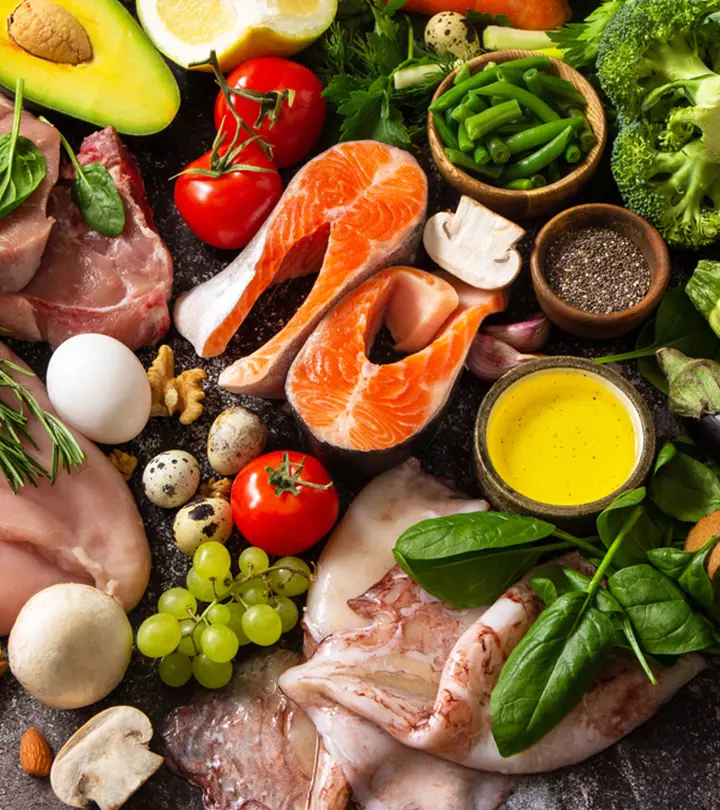

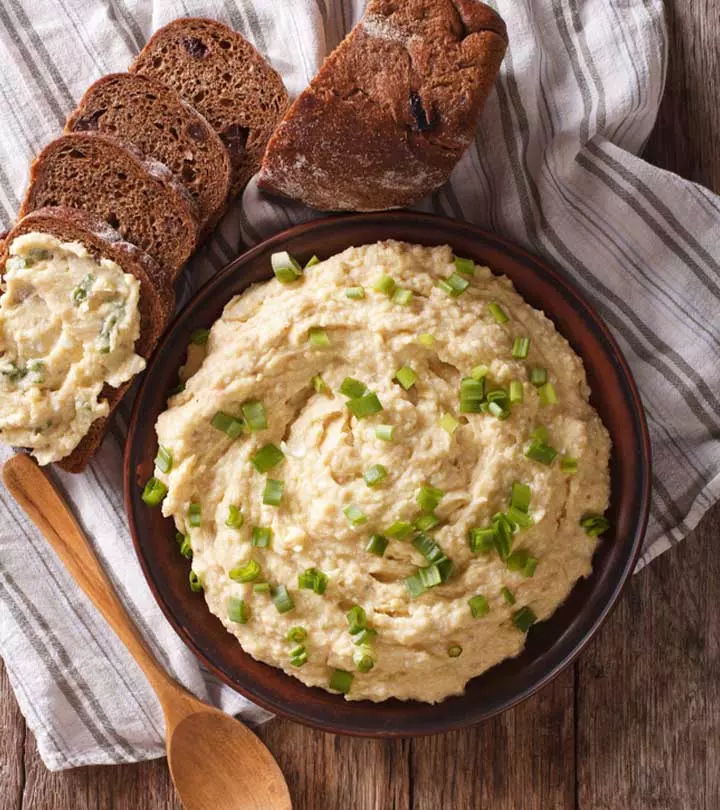
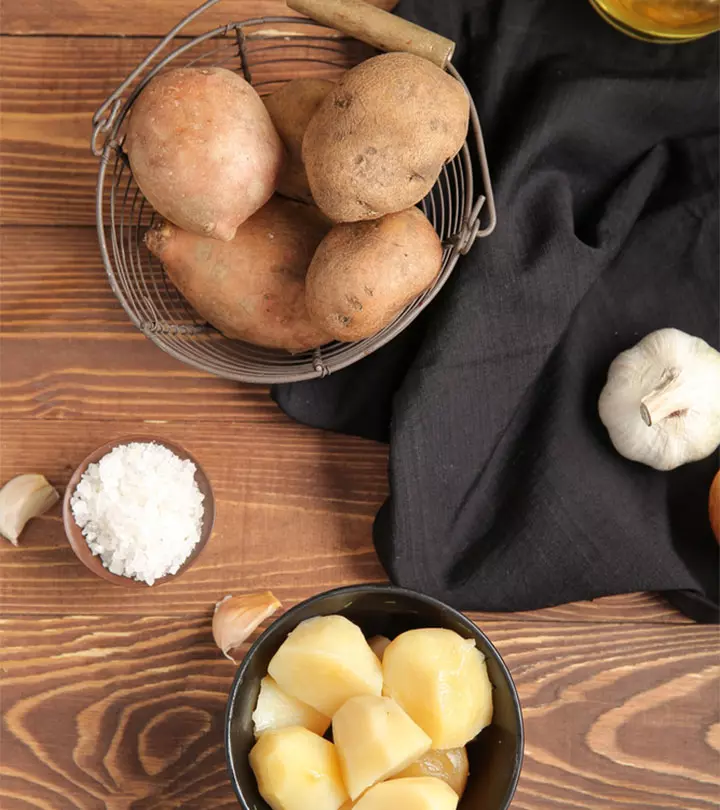

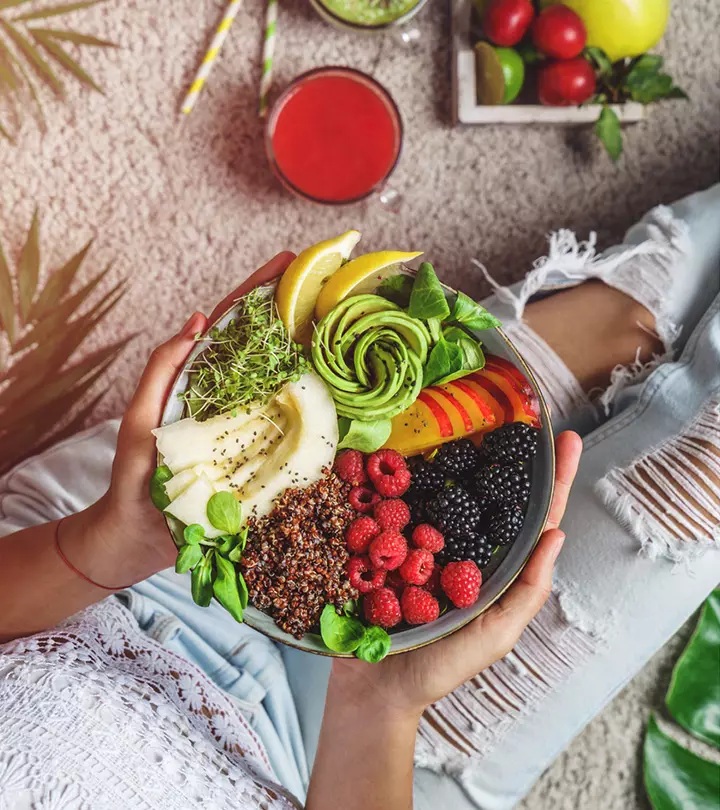
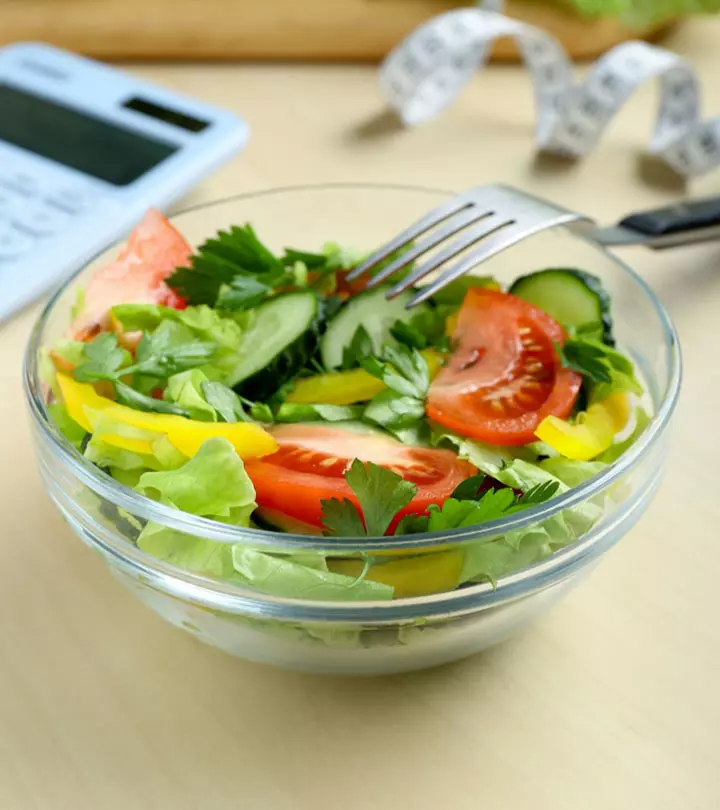




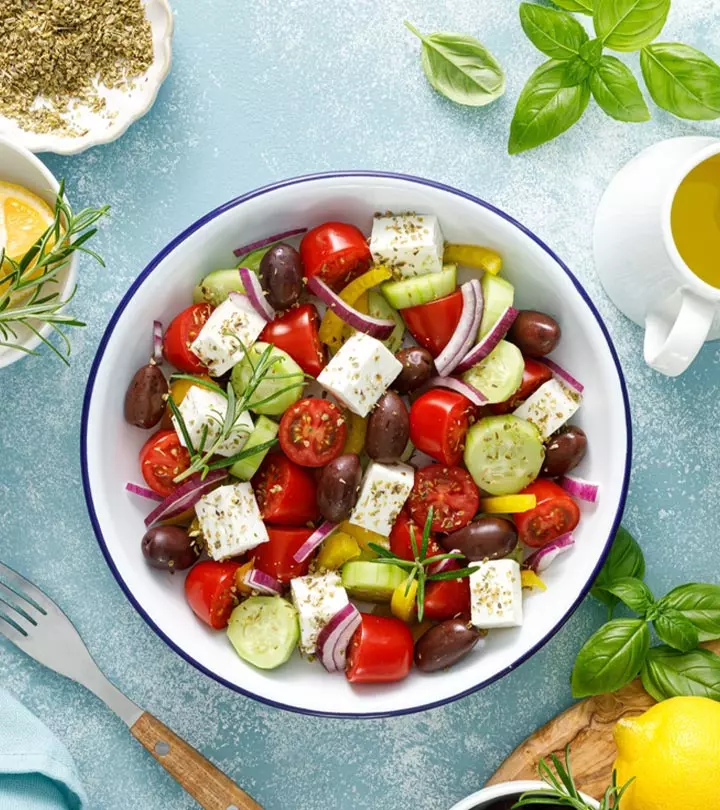



Community Experiences
Join the conversation and become a part of our empowering community! Share your stories, experiences, and insights to connect with other beauty, lifestyle, and health enthusiasts.